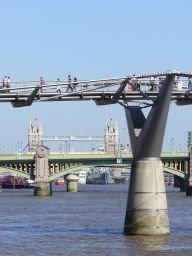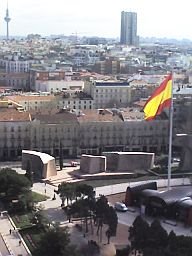
However, the gondola lives on as a popular tourist pastime. Each vessel is built of wood, more than 280 pieces, assembled over a four week period by a master craftsman. Expect to pay upwards of €50,000 to take possession upon completion. Since 1630, the city has decreed that all gondolas be pained black.

On our last full day in Venice, we decided to treat ourselves to a ride through some of the city’s quieter canals. As the soft light of early evening fell we boarded a gondola staffed by an elderly man and his young apprentice son. Murray recognized the senior gondolier. He’d seen him having a beer at a local bar – the one we’d stopped at earlier to enjoy Happy Hour. It was also a bar decorated by row upon row of discarded bras hanging from wires attached to the ceiling. We discovered these discarded souvenirs soon after we’d ordered. This wasn’t quite the cosy jazz bar indicated by the doorway signage.
Needless to say we soon realized that our gondolier had seen better days (probably, more sober ones as well). His antics soon resulted in the son taking matters into his own hands. Strong Italian words were exchanged and our gondola ride continued without incident.

Drifting through the canals was magic. You’re able to nosey into other people’s back entrances, see life go on as normal, with laundry hanging from windows and locals watering flowers in their window boxes. This was the perfect way to end our Venetian vacation.
All that remained was to gather early the following morning outside San Marco. We wanted to beat the enormous crowd we’d seen all weekend queuing to enter the basilica. We timed our arrival perfectly, and soon found ourselves inside San Marco less than ten minutes after opening. The interior immediately speaks of both age and wealth.
The floor is an undulating series of mosaic tiles. Mosaic floors were preferred to marble slabs, as they coped far better with the city’s constant subsidence. Every inch of the walls and ceiling are decorated by mosaic tiles, many gilded thus giving the interior a dull yellow tone.

Murray and I also took it upon ourselves to climb the narrow stairway up to the Loggia. Here we were afforded stunning views of the ceiling, as well as the gallant bronze horses stolen from Constantinople. The originals are displayed inside while skillful replicas are mounted outside, directly over the basilica’s main entrance. The sloping terrace behind them provides a sweeping view of Piazza San Marco.

From here it was back to our hotel to gather our bags, check out and catch a waiting water taxi to the airport. Our five days in Venice were over.



















































